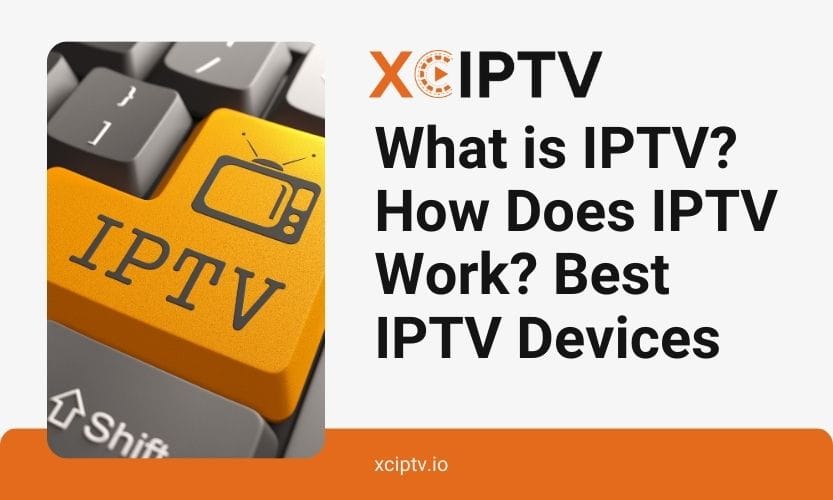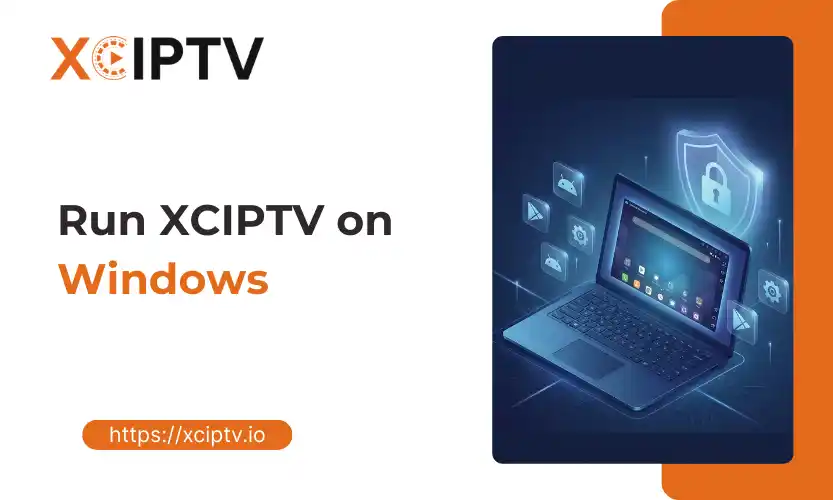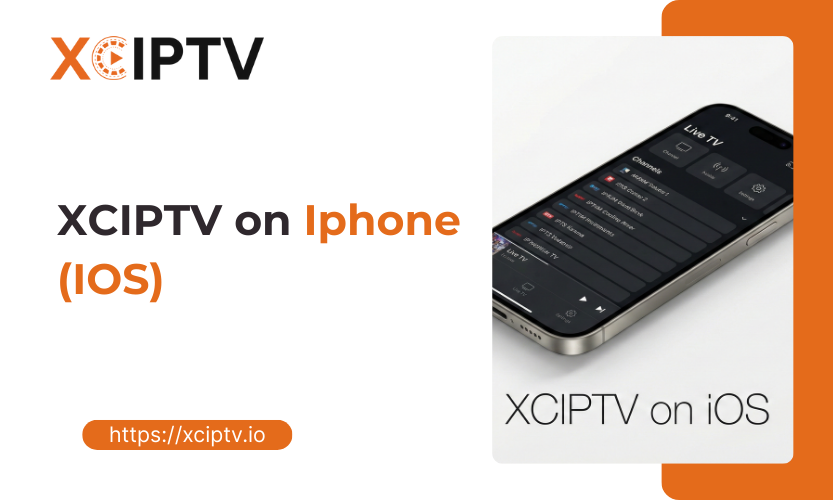IPTV stands for Internet Protocol Television. It refers to television content delivered over an Internet Protocol (IP) network rather than through traditional satellite or cable television formats. It can provide both live and on-demand content.
IPTV allows users to stream various media content, such as live TV channels, movies, and videos. The only requirement is an active Internet connection.
Hence, the viewers can watch their favourite programs on various devices, including TVs, computers, smartphones, and tablets, using apps or software that support IPTV services.
In simple terms, IPTV is a system where digital television service is delivered to the subscriber through Internet protocol technology. You watch your TV shows via the Internet.
So, in addition to tuning into any Live TV shows currently being aired, they can even watch content that has been aired previously.
Key Features of IPTV:
- On-demand content: Watch what you want, when you want.
- Live TV streaming: Enjoy live broadcasts over the internet.
- Time-shifted media: Pause, rewind, or fast-forward live TV.
- Interactive services: Engage with content through features like voting or quizzes.
How is IPTV Different from Traditional TV?
To understand IPTV better, let’s compare it to traditional TV services:
| Traditional TV | IPTV |
| Broadcasts content in real-time | Streams content on-demand or live |
| Limited by geographical broadcast areas | Available anywhere with an internet connection |
| Requires special equipment (antenna, dish) | Works with existing internet-connected devices |
| One-way communication | Allows for interactive features |
| Fixed program schedules | Flexible viewing options |
To understand how IPTV is different from traditional TV, let’s compare the traditional mode of viewing TV with IPTV:
IPTV vs. Traditional TV
Traditional TV (Cable and Satellite TV)
Cable and satellite both function by enabling users to “tune in” to specific channels within a signal. The fundamental difference is that cable is via a wired connection. In contrast, the satellite is wireless (until it reaches your house, anyway).
A prime example of Cable TV is Comcast Xfinity, which is delivered via coaxial cable connection. An example of Satellite TV is from providers like DISH Network, which is transmitted and delivered to the viewers via radio waves.
IPTV
IPTV systems use an Internet protocol (IP) based network to deliver TV channels to users’ set-top boxes. Internet networks differ from cable and satellite by offering content through the same client-server model that renders email, websites, and other Internet-based services.
As we will see further in this blog, IP, or Internet Protocol, is the language used for transferring data packets between computers attached to the Internet network. In IPTV, the consumer requests and receives TV Shows, and Video content is delivered to the viewer via Internet Protocol (IP) based networks instead of cable or satellite.
Cable or satellite where content is broadcast in real-time, on a transmit-and-forget model.
The IPTV server can store programming on servers at the transmitting end, allowing users to request content over the Internet at any time.
Who is IPTV for?
IPTV caters to a wide range of viewers:
- Cord-cutters: Those looking to replace traditional cable or satellite subscriptions.
- Sports fans: IPTV often offers extensive live sports coverage.
- International viewers: Access to global content that might not be available through local providers.
- Tech-savvy users: Those who appreciate the flexibility and features of internet-based services.
How Does IPTV Work?
IPTV is much more similar to browsing the internet than traditional channel surfing. It merely uses IP (Internet Protocol), a transport protocol that is a delivery mechanism to deliver the videos to the viewer.
When the viewer clicks on any TV program or requests a video, video from different sources (servers) is divided into data packets and sent over the Internet. Video servers transmit programs through fiber-optic cable to existing households via an internet connection, requests are sent out, and shows are sent back.
Let’s take a look at the IPTV architecture to understand better how IPTV works.
IPTV Architecture
Depending on the service provider’s network architecture, two main types of IPTV architecture can be considered for IPTV deployment: centralized and distributed.
The centralized architecture model is a relatively simple and easy-to-manage solution. Because all media content is stored on centralized servers, it does not require a comprehensive content distribution system.
Centralized architecture is generally good for a network that provides relatively small VOD service deployment, has an adequate core and edge bandwidth, and has an efficient content delivery network (CDN).
Distributed architecture is just as scalable as the centralized model. However, it has bandwidth usage advantages and inherent system management features that are essential for managing a larger server network.
Operators who plan to deploy a relatively large system should, therefore, consider implementing a distributed architecture model right from the start. Distributed architecture requires intelligent and sophisticated content distribution technologies to augment the effective delivery of multimedia content over the service provider’s network.
Architecture Diagram of a Typical IPTV Network
The central unit receives broadcast content from satellites and local antennas. It is also where live TV channels and AV sources are encoded, encrypted, and delivered in the form of IP multicast streams.
The Central unit will also contain the Advertising Servers, Live TV Streaming Servers, Video on Demand (VOD) servers & platform, and is where on-demand video assets are stored and served as IP unicast streams when a user makes a request. The VOD platform may sometimes be located within and considered part of the IPTV’s central unit.
The requested videos and TV Channels are delivered to the viewer via the delivery network, which consists of a robust internet uplink via Fiber Optics from the IPTV broadcaster’s end.
The viewer will receive this signal at their end via their local or preferred internet service provider, which can offer options such as broadband, fiber optics, DSL, etc.
How Does IPTV Work From the Viewer’s End?
When viewers subscribe to an IPTV service, they are provided with the service’s specific Set-Top Box (STB).
A set-top box (STB) is a piece of endpoint equipment that decodes and decrypts TV and VOD streams for display on the TV screen. This STB is connected to the viewer’s internet connection (router) and uses the internet to deliver video and TV content to the viewer.
The viewer requests videos or TV Channels via an interactive portal in the STB that allows the viewer to navigate between different IPTV services, such as the VOD catalog.
While this is a typical example of an IPTV architecture model, due to the wide variety of service providers in the market today and the IT options available in the market, each service provider may decide to implement a slightly different architecture that suits their needs, geographic area, endpoint internet connectivity, local market conditions and requirements, and business model.
However, at the core, the principles remain the same and may not be too different from what you see here.
Best IPTV Devices
To enjoy IPTV services, you’ll need a compatible device. Here are some popular options:
- Smart TVs: Many modern TVs come with built-in IPTV capabilities.
- Set-Top Boxes: Dedicated devices that connect to your TV and internet to provide IPTV services.
- Streaming Devices: Products like Amazon Fire TV Stick, Roku, or Apple TV can often be used for IPTV.
- Computers and Mobile Devices: Many IPTV services offer apps for PCs, smartphones, and tablets.
Precautions when using IPTV platforms
- Use a VPN
A virtual private network (VPN) service helps you stay private online by hiding your true IP address and creating an encrypted connection between your device and your internet service provider.
For instance, you can browse in Canada using an IP address in the US. If there’s any legal requirement for your ISP to provide the IP addresses of users who watched certain content online, they won’t be able to identify your true IP address. Instead, they’ll only pinpoint the IP address offered by your VPN provider, which doesn’t tie to your real identity.
Furthermore, a VPN lets you access content restricted in your region. You can switch between IP addresses of different countries to watch content available in those regions but unavailable in yours.
- Be careful about advertisements.
Some IPTV platforms may show ads that pop up throughout the webpage or when streaming content, like cable commercials. However, the ads on such sites may be for questionable products or services.
It’s common to see advertisements for dubious investments, games, medical products, etc. Malware vendors may also use some streaming sites as vectors to infect devices. You should avoid clicking any advertisements on such sites. If possible, download an ad-blocker to avoid advertisements altogether.
- Payments
Be cautious when making payments for IPTV services. Use secure payment methods and be wary of services that ask for payment through unconventional means. If possible, use payment methods that offer buyer protection.
Considerations when choosing an IPTV service
Some critical factors to consider when choosing an IPTV service include:
- Price: Pick a service that delivers the best content selection for the most affordable price.
- Content Library: Ensure the service offers the channels and shows you’re interested in watching.
- Streaming Quality: If your internet connection supports it, look for services that offer high-definition or 4K streaming.
- Device Compatibility: Make sure the service works with the devices you own.
- User Interface: A user-friendly interface can greatly enhance your viewing experience.
- Customer Support: Good customer support can be crucial when you encounter technical issues.
- Legality: Ensure you’re subscribing to a legal IPTV service to avoid potential legal troubles.
Conclusion
IPTV represents the future of television consumption, offering flexibility, variety, and interactivity that traditional TV services can’t match. As internet infrastructure continues to improve worldwide, we can expect IPTV to become increasingly prevalent, reshaping how we experience television entertainment.
At this point, you should have a good overview of IPTV services and how to make the best of them. We hope this article is of great help to you.




